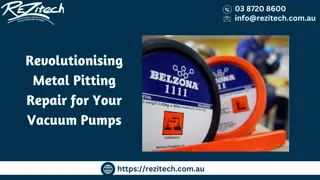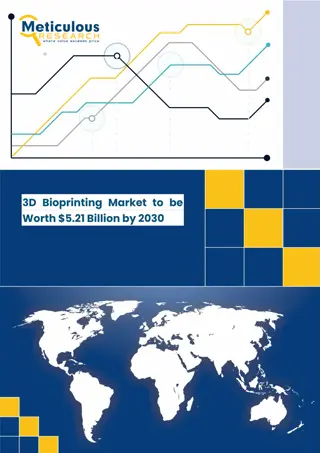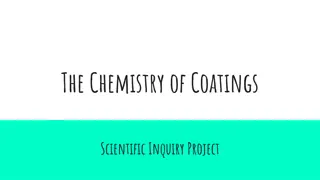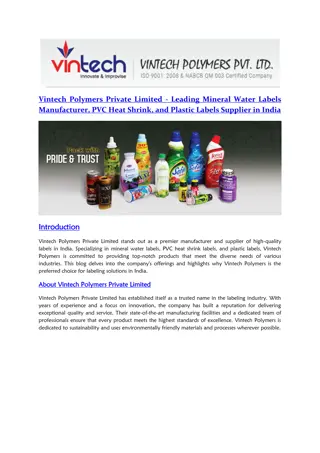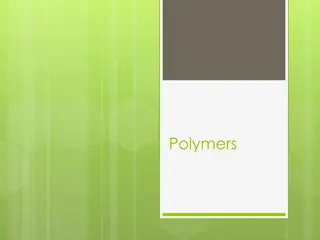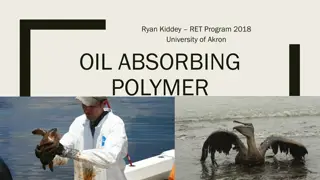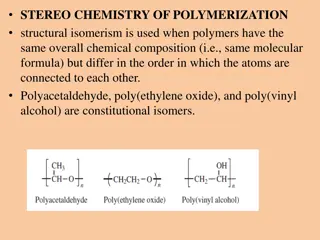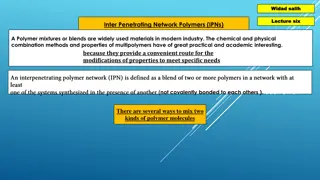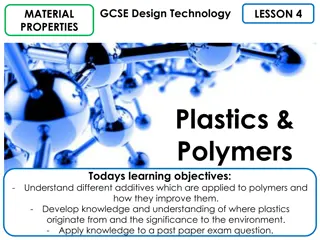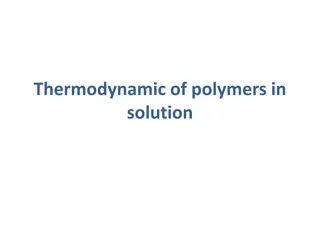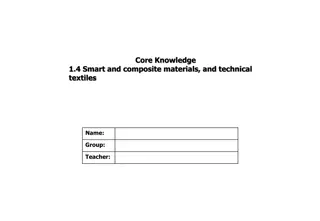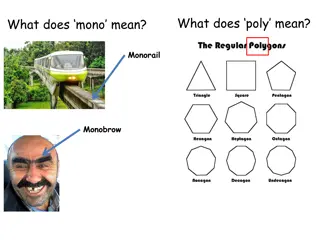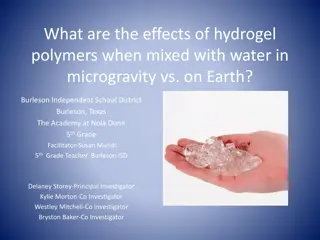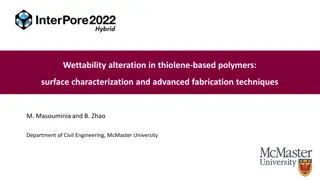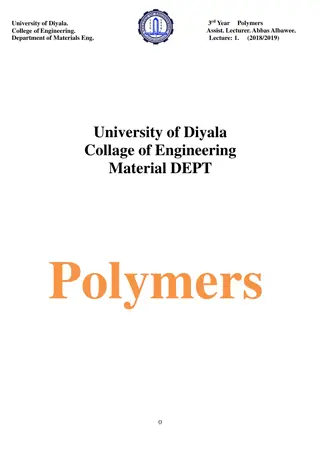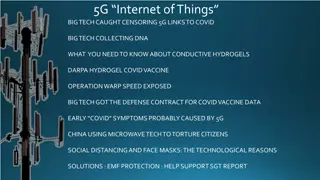Exploring the Fascinating World of Hydrogels and Polymers
Dive into the realm of hydrogels and polymers, discovering their unique properties and versatile applications in everyday life and medicine. Learn how to create hydrogels using the chelation process and explore the science behind these water-loving materials. From contact lenses to knee surgery innovations, hydrogels play a crucial role in various fields, offering a blend of elasticity, strength, and hydration. Join us on a journey through the engineering connections and practical implications of these fascinating substances.
Download Presentation

Please find below an Image/Link to download the presentation.
The content on the website is provided AS IS for your information and personal use only. It may not be sold, licensed, or shared on other websites without obtaining consent from the author. Download presentation by click this link. If you encounter any issues during the download, it is possible that the publisher has removed the file from their server.
E N D
Presentation Transcript
Outline Introduction and Motivation, Pre-Assessment: 15min Hydrogel preparation: 20 min Wrap up discussion and Post-Assessment: 15 min
Learning Objectives Create a hydrogel using the crosslinking process (chelation) Understand and explain the chelation of a polymer using the ionic crosslinking process by exchanging a monovalent metal cation (Na+1) with a divalent metal cation (Ca+2) Explain what a hydrogel is and its different uses and applications
Polymers and Hydrogels in everyday life Have you used hydrogels before? Chances are you have. If you are wearing a contact lens, you are using a hydrogel; how about a hydrogel hand sanitizer? A hydrogel is likely keeping a baby s bottom dry. You are probably a frequent user of hydrogels, but do you know the science behind them?
Polymers and hydrogels in everyday life Hydrogels are hydrophilic, or water-loving, polymers that are capable of absorbing and retaining a lot of water while also making a substrate for other materials, such as other polymers, minerals (nanoparticles), or other compounds. There are even 3D printable hydrogels that show promise in knee surgery!
Polymers and hydrogels Polymers are a class of natural or synthetic substances composed of very large molecules, called macromolecules, which are multiples of simpler chemical units called monomers. Polymers make up many of the materials in living organisms and are the basis of many minerals and man-made materials. Hydrogels are hydrated, polymeric networks that exhibit higher elasticity and strength and can be blended with other materials for endless applications
We are going to create alginate-based hydrogels by ionic crosslinking
Engineering Connection Hydrogels are hydrated, polymeric networks that exhibit high elasticity and strength. Sodium alginate (SA) is a natural hydrophilic biopolymer typically obtained from marine brown macroalgae, suitable for making hydrogels due to its cross-linking ability, biocompatibility, chelating ability, water solubility, bio absorbency and low cost.
Hydrogel Activity Hydrogel preparation: 20 minutes Solutions: Sodium alginate (SA) solution in distilled water a 1% w/v concentration Calcium chloride 0.1M, 0.05M and 0.02M
Activity (20 minutes) Follow the Activity Worksheet for crosslinking the alginate solution with calcium chloride solutionsand then answer the questions.
Wrap Up (15 minutes) Post-Assessment Worksheet Recap and discussion led by teacher Reflection
Recap and discussion What is a hydrogel? What happens during ionic crosslinking? What do you think about uses of hydrogels?
Reflection 1. What did you learn today? 2. What was difficult? 3. What could you have done differently?



